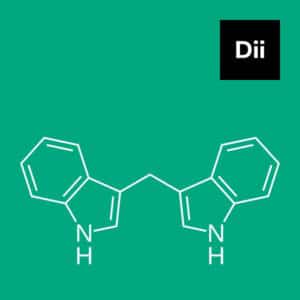Overview
Melatonin is produced by the pineal gland, which is located in the hypothalamus, which is located in the middle of the brain. It is a chemical derivative of serotonin, a soothing neurotransmitter in the brain.
Melatonin, known as the sleep hormone, regulates biological clocks, boosts the immune system, fights free radicals, suppresses tumor-promoting hormones like estrogen, and even lowers blood pressure. It is best recognized, however, as the master regulator hormone that regulates the body’s clock and causes sleep. Melatonin levels can be reduced, and its release delayed due to variables such as aging, artificial lighting, and blue light from digital displays, particularly during sleep, making it a particularly helpful supplement.
Key Benefits
- Aids in the restoration and maintenance of circadian metabolic cycles
- Improves sleep initiation and duration; promotes regular sleep patterns and peaceful sleep; alleviates jet lag and sleep issues in shift workers.
- It enhances daily alertness and mental clarity.
- Aids in the prevention of the harmful effects of being exposed to electromagnetic fields.
- Prevents age-related macular degeneration
History of Usage
The Greeks mentioned the pineal gland, which generates melatonin, as early as the second century. Descartes defined the pineal gland as the seat of the soul in the 16th century. However, the hormone melatonin was identified in 1958 by dermatologist Aaron Lerner. Since the 1980s, it has been widely investigated.
Lerner discovered a chemical from the bovine pineal gland that bleached amphibian skin dramatically. Melatonin is the chemical he named for himself. Lerner then began researching the hormone’s influence on sleep. Lerner observed no adverse effects from a self-experiment with 100 mg of melatonin other than sleepiness.
Scientists still thought that the light-dark cycle was vital for animals, but not for humans, in the 1960s. Alfred Lewy found in 1981 that bright light used at night reduced natural melatonin in people.
This discovery was a watershed moment in melatonin research. The hormone got a lot of attention in the early 1990s as research revealed the impact of melatonin on many body processes, such as immunological regulation, tumor growth inhibition, capturing of oxygen radicals, and the influence on calcium-dependent metabolic processes. Hundreds of research have been conducted since then to establish the influence of melatonin on human health.
Biochemistry
Besides being the “sleep hormone,” melatonin has antioxidant, anti-inflammatory, anti-apoptotic, and other crucial properties. It is synthesized in the pineal gland and is released into the bloodstream, where it is distributed to all tissues. However, it is also synthesized in the retina, gastrointestinal tract, and the innate immune system.
Melatonin has two important functional groups that determine its specificity: the 5-methoxy group and the N-acetyl side chain. It can diffuse and cross the placenta and blood-brain barriers, and can enter all cells of the body, as well as influence the function of a variety of tissues. Melatonin is produced mainly 4 to 5 hours after sunset. Melatonin levels lessen significantly as we age.
Recent Trends
Melatonin sales are still on the rise. Melatonin ingredient sales increased 43.6 percent to $573 million in the 52 weeks ending November 29, 2020, according to statistics given by SPINS (Chicago) on the U.S. mainstream dietary supplement channel, placing fifth on the list of 25 best-selling mainstream supplement ingredients overall.
Melatonin increased 46.9 percent to $536 million in the mainstream sleep category, with the rest of the market following suit.
Melatonin’s effectiveness can be attributed to a number of factors. During the COVID-19 epidemic, consumers were increasingly concerned about their health and heard more stories about the link between sleep and immune health.
Melatonin also has a strong brand name, so people who are experiencing problems sleeping typically resort to it first before looking for alternative solutions. In reality, according to the Consumer Survey on Dietary Pills, which was conducted on more than 2,000 U.S. adults between August 27 and 31, 2000, 14 percent of dietary supplement users used supplements for sleep, and 66 percent of them used melatonin.
Melatonin-based multi-ingredient sleep solutions containing amino acids, magnesium, GABA, CBD, skullcap, and passionflower as key ingredients are becoming popular in a variety of forms, including liquid limposomal formulations. Melatonin gummies are also growing more popular among both adults and children.
Precautions
- Women who are pregnant or breast-feeding should check with their doctor before using this product.
- Melatonin should not be used by women who are attempting to conceive.
- Melatonin supplementation is well tolerated and has no discernible short-or long-term side effects.
- However, some people have experienced daytime sleepiness, dizziness, headaches, stomach cramps, moderate tremors, mild anxiety, irritability, decreased attention, and hypotension on rare occasions.
References
- Xie Z, Chen F, Li WA, Geng X, Li C, Meng X, Feng Y, Liu W, Yu F. A review of sleep disorders and melatonin. Neurol Res. 2017 Jun;39(6):559-565. doi: 10.1080/01616412.2017.1315864. Epub 2017 May 1. PMID: 28460563.
- Mehrzadi S, Hemati K, Reiter RJ, Hosseinzadeh A. Mitochondrial dysfunction in age-related macular degeneration: melatonin as a potential treatment. Expert Opin Ther Targets. 2020 Apr;24(4):359-378. doi: 10.1080/14728222.2020.1737015. Epub 2020 Mar 2. PMID: 32116056.
- Stefanova NA, Zhdankina AA, Fursova AZh, Kolosova NG. [Potential of melatonin for prevention of age-related macular degeneration: experimental study]. Adv Gerontol. 2013;26(1):122-9. Russian. PMID: 24003738.
- Amaral FGD, Cipolla-Neto J. A brief review about melatonin, a pineal hormone. Arch Endocrinol Metab. 2018 Aug;62(4):472-479. doi: 10.20945/2359-3997000000066. PMID: 30304113.
- García-Navarro A, González-Puga C, Escames G, López LC, López A, López-Cantarero M, Camacho E, Espinosa A, Gallo MA, Acuña-Castroviejo D. Cellular mechanisms involved in the melatonin inhibition of HT-29 human colon cancer cell proliferation in culture. J Pineal Res. 2007 Sep;43(2):195-205. doi: 10.1111/j.1600-079X.2007.00463.x. PMID: 17645698.
- García-Navarro A, González-Puga C, Escames G, López LC, López A, López-Cantarero M, Camacho E, Espinosa A, Gallo MA, Acuña-Castroviejo D. Cellular mechanisms involved in the melatonin inhibition of HT-29 human colon cancer cell proliferation in culture. J Pineal Res. 2007 Sep;43(2):195-205. doi: 10.1111/j.1600-079X.2007.00463.x. PMID: 17645698.
- Claustrat B, Brun J, Chazot G. The basic physiology and pathophysiology of melatonin. Sleep Med Rev. 2005 Feb;9(1):11-24. doi: 10.1016/j.smrv.2004.08.001. PMID: 15649735.




